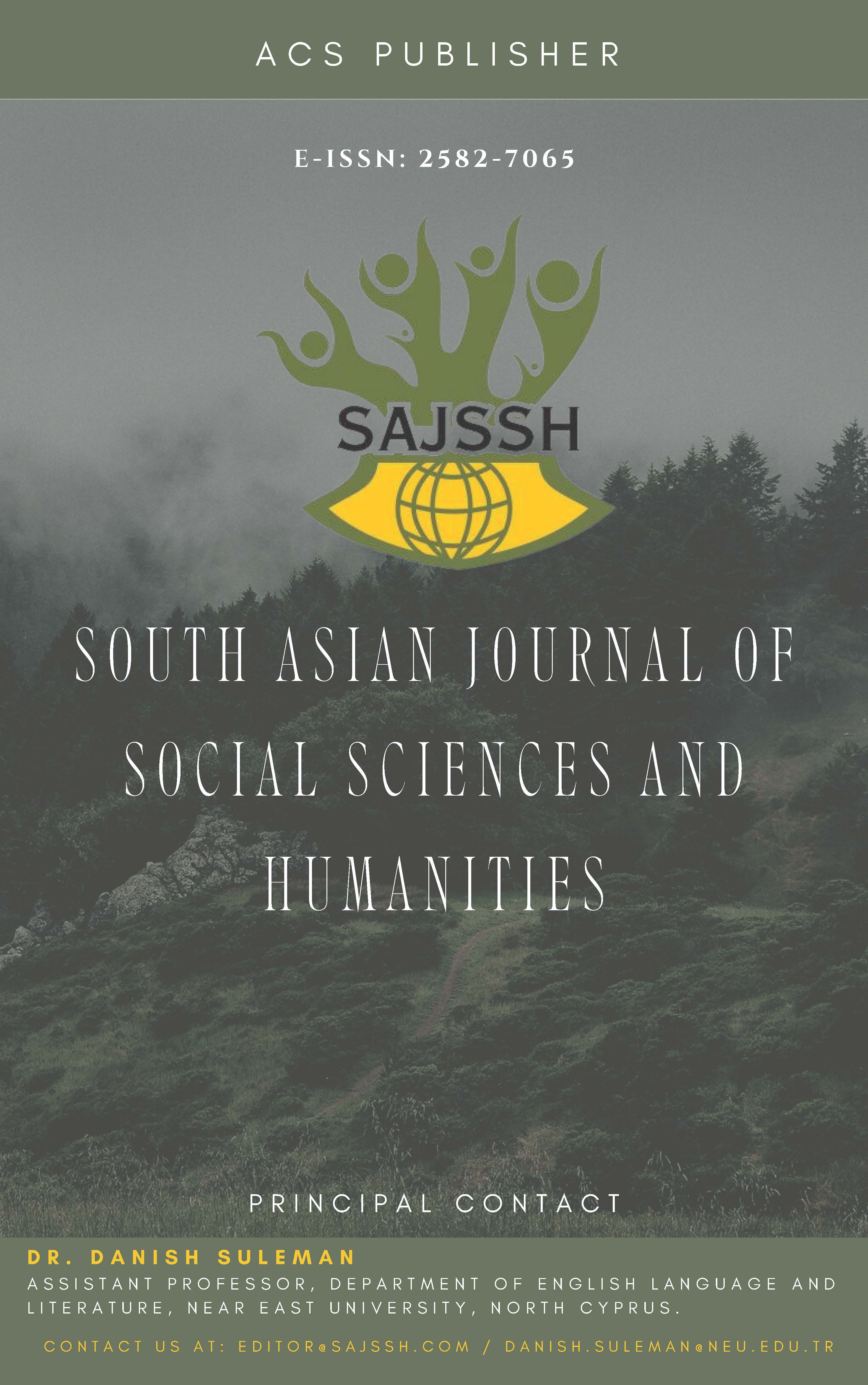Students' Use of Smartphone Apps in Higher Education Institutions
DOI:
https://doi.org/10.48165/sajssh.2024.6110Keywords:
Higher Education, eLearning , mobile appsAbstract
This study explores the Higher Education (HE) learners’ attitude toward using the Smartphone One Lesson Apps (SOLA) as a proactive browser for the topics and skills of the next lesson in the class rooms of Higher Education Institutes (HEIs). A sample of Omani students from different sections of the Foundation Program of Information Technology (FPIT) of the Foundation Program Level (FPL) at the University of Technology and Applied Science (UTAS-Salalah in Oman) had been encouraged to complete the designed survey for this purpose using a 5-points likert-scale. The collected data was formatted and analyzed using SPSS. The outcomes showed that the respondents mostly used the SOLA for proactive review and practice, which led to well prepared for the next lesson’s objectives and skills, thus improving the FPIT system and the desired skills as well. Moreover, the respondents in general offered positive attitudes toward the SOLA. Furthermore, the results propose motivated and ambitious inferences for utilizing SOLA applications in FPIT and other courses in the HEIs
References
Alexander, B., et al., (2019). EDUCAUSE Horizon Report: 2019 Higher Education Edition. https://library.educause.edu//media/files/library/2019/4/2019horizonreport.pdf?la=en &hash=C8E8D444AF372E705FA1BF9D4FF0DD4CC6F0FDD1
Auquilla A., Urgiles M. (2017). The Use of iPad and Applications for English Language Education, Theory and Practice in Language Studies, 7, (9), 709 – 715. https://www.researchgate.net/publication/319628423_The_Use_of_iPad_and_Applica tions_for_English_Language_Education
Bağcı, H., & Pekşen, M. F. (2018). Investigating the Smart Phone Addictions of Vocational School Students from Different Variables. Malaysian Online Journal of Educational Technology, 6(4), 40–52. https://doi.org/10.17220/mojet.2018.04.004
Bui, H. P., Bui, H. H. P., & Dinh, P. D. (2023). Vietnamese Students’ Use of Smartphone Apps in English Learning. LEARN Journal: Language Education and Acquisition Research Network, 16(1), 28–46. https://so04.tci thaijo.org/index.php/LEARN/article/view/263430
Carvalho, A., et al., (2014). Minutes of the 2nd Meeting on Games and Mobile Learning . http://repositorium.sdum.uminho.pt/handle/1822/2 9145 (after I translated into English)
Chen, Z., Chen, W., Jia, J. et al. (2020) .The effects of using mobile devices on language learning: a meta-analysis. Education Tech Research Dev 68, 1769–1789. https://doi.org/10.1007/s11423-020-09801-5
Cheung, S. K. S. (2015). A Case Study on the Students’ Attitude and Acceptance of Mobile Learning. Part of the Communications in Computer and Information Science book series (CCIS,volume 494). https://link.springer.com/chapter/10.1007/978-3-662- 46158-7_5
CoSN. Tech DRIVING. (2019). Consortium for School Networking; CoSN: Washington, DC, USA,. https://edtechmagazine.com/k12/cosn-conference-2019
Dashtestani, R. (2016). Moving bravely towards mobile learning: Iranian students' use of mobile devices for learning English as a foreign language. https://eric.ed.gov/?id=EJ1099289
Dawson, H. & Edel-Malizia, S. & Mockus, L. & Shaffer, D. & Sung An, J. & Swaggerty, A. 2011. The Impact of Mobile Access on Motivation: Distance Education Student Perceptions. Sloan C International Conference for Online Learning.
Dumpit & Fernandez, )2017). Analysis of the use of social media in Higher Education Institutions (HEIs) using the Technology Acceptance Model. https://www.researchgate.net/publication/314145315_Analysis_of_the_use_of_social _media_in_Higher_Education_Institutions_HEIs_using_the_Technology_Acceptance _Model
Granic, A., & Marangunic, N. (2019). Technology Acceptance Model in Educational Context: A Systematic Literature Review. British Journal of Educational Technology, 50, 1-40. https://doi.org/10.1111/bjet.12864
https://www.researchgate.net/publication/281554486_The_Impact_of_Mobile_Access_on_M otivation_Distance_Education_Student_Perceptions
Huong, L. P. H. & Hung, B. P. (2021). Mediation of digital tools in English learning
Kaite, J., et al., (2012) . Effects of Technology on Student Learning TOJET: The Turkish Online Journal of Educational Technology – January 2021, volume 20 Issue 1. https://files.eric.ed.gov/fulltext/EJ1290791.pdf
LEARN Journal: Language Education and Acquisition Research Network, 14(2), 512-528. https://files.eric.ed.gov/fulltext/EJ1310701.pdf
Mindog, E. (2016). Apps and EFL: A Case Study on the Use of Smartphone Apps to Learn English by Four Japanese University Students. JALT CALL Journal, v12 n1 p3-22. https://files.eric.ed.gov/fulltext/EJ1107946.pdf
Norbutayevich, J. T. (2023). The use of mobile learning applications in higher education institutes. Advances in Mobile Learning Educational Research,3(1), 610-620. https://www.syncsci.com/journal/AMLER/article/view/AMLER.2023.01.010/758
Oliveira, D.; et al. (2020). Measuring the (perceived and effective) use of mobile applications by students in higher education classes: A pilot study. https://ieeexplore.ieee.org/document/9140875
Reimagining the Role of Technology in Education. (2017). US Department of Education National Education Technology Plan Update. https://tech.ed.gov/files/2017/01/NETP17.pdf
Shivakumar, G. S., & Manichander, T. (2013). Restructuring the Future Classroom- A Global Perspective. i-manager’s Journal on School Educational Technology, Vol.9 No. (2). http://files.eric.ed.gov/fulltext/EJ1098303.pdf.
Teaching with App Inventor. (2022). Massachusetts Institute of Technology. https://appinventor.mit.edu/explore/teach
Traxler, J., & Koole, M. )2014(. The Theory Paper: What is the Future of Mobile Learning? In I.A. Sánches and P. Isaías (Eds.), 10th International Conference on Mobile Learning, IADIS Press, 289–293.
https://www.researchgate.net/publication/277247839_The_theory_paper_What_is_the _future_of_mobile_learning
Downloads
Published
Issue
Section
License
Copyright (c) 2025 South Asian Journal of Social Sciences and Humanities

This work is licensed under a Creative Commons Attribution 4.0 International License.





